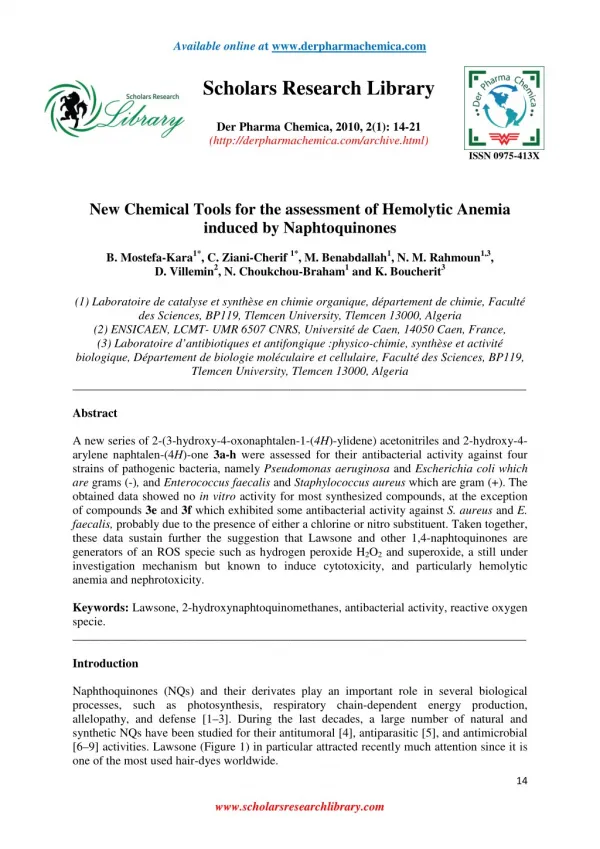New Chemical Tools for the assessment of Hemolytic Anemia induced by Naphtoquinones
A new series of 2-(3-hydroxy-4-oxonaphtalen-1-(4H)-ylidene) acetonitriles and 2-hydroxy-4- arylene naphtalen-(4H)-one 3a-h were assessed for their antibacterial activity against four strains of pathogenic bacteria, namely Pseudomonas aeruginosa and Escherichia coli which are grams (-), and Enterococcus faecalis and Staphylococcus aureus which are gram ( ). The obtained data showed no in vitro activity for most synthesized compounds, at the exception of compounds 3e and 3f which exhibited some antibacterial activity against S. aureus and E. faecalis, probably due to the presence of either a chlorine or nitro substituent. Taken together, these data sustain further the suggestion that Lawsone and other 1,4-naphtoquinones are generators of an ROS specie such as hydrogen peroxide H2O2 and superoxide, a still under investigation mechanism but known to induce cytotoxicity, and particularly hemolytic anemia and nephrotoxicity.
★
★
★
★
★
106 views • 8 slides
